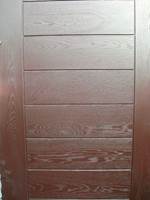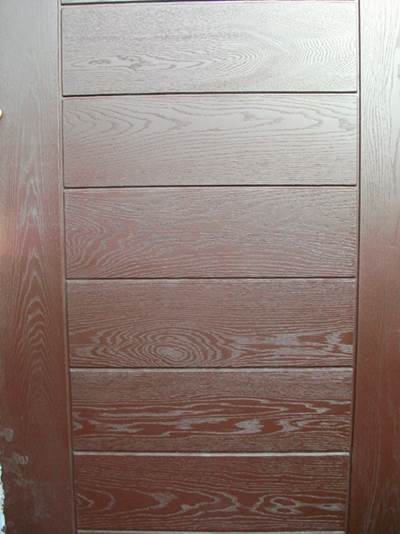Cladding controversy: SMC insulation panels preserve pre-1919 building aesthetics
Acell (Milan, Italy) offers a solution for insulating older buildings that is designed to satisfy advocates of both architectural preservation and environmental conservation.
Italian chemical and development group Acell (Milan, Italy) has already earned kudos in the construction composites industry with its innovative foam-cored sandwich panels for doors (click on “SMC sandwich panels: Lean process opens doors," under "Editor's Picks," at top right). Recently, the company offered a solution designed to satisfy advocates of both architectural preservation and environmental conservation.
Concern is mounting, particularly in Europe, about how to control carbon emissions, considered by a growing number of climate scientists to be a contributor to global climate change. A Sunday London Times article published earlier this year said that 43 percent of all greenhouse gas emissions in Great Britain come from the more than 8 million poorly insulated or entirely uninsulated buildings built before 1919. The U.K.’s Department of Energy and Climate Change has proposed installing exterior insulation from 3- to 8-inches (76- to 200-mm) thick to cut the heat loss, as part of a “green deal” for homeowners.
Preservationists, including the U.K.-based Sustainable Traditional Buildings Alliance, recognize the government program’s aim as good, but they claim that the exterior wraps threaten the unique character and appearance of English towns and suburbs. Acell’s managing director Michael Frieh says, “The products currently available on the market are usually plastic siding, wood cladding or simple ‘renderings’ made up of many layers that cover the insulation, which can be painted, but leave little option but to change a building’s look.” But he believes his company’s innovative molded panels can provide part of the solution, because they can mimic exactly almost any exterior finish on the surface of foam-cored insulation panels.
Acell’s patented molding technology, which combines sheet molding compound (SMC) skins and a core of frangible yet fire-resistant phenolic foam in a low-pressure compression molding press, uses custom aluminum molds that are cast from a fiberglass master model. The model is layed up directly on any selected material, such as brick, wood or stone. This makes it possible for Acell to replicate virtually any planar architectural surface in the mold surface, for classical finishes, such as brick, or very contemporary designs, says Frieh. Color is duplicated through the use of in-mold coatings, natural sand or even printed fabrics.
To demonstrate the technology for U.K. applications, a project was recently undertaken in central Milan on a six-story apartment building with a façade of deteriorated brick and ceramic tiles. The appearance of the brick and tiles (see photos) was precisely matched, and the original façade then was replaced with the Acell panels, which added insulation (0.0478 W/m2K at 140 kg/m3 foam density) and sound-deadening benefits. According to Frieh, the SMC/foam panels not only duplicate the original façade’s appearance and provide insulation but they also meet applicable building code and fire requirements for cladding, both in Italy and the U.K. “The panels were economical, installed quickly and yet preserved the traditional look of the building,” he sums up.
Across the Atlantic, Acell is partnering with Ashland, LLC (Columbus, Ohio) in North America and is seeking licensees to make panels for cladding or other architectural applications in that region. Says Ashland’s Mike Wallenhorst, director of product management, “We’re excited about the potential Acell presents to expand the composites market into new construction applications.”
Related Content
AOC resins support SMC composite doors for air raid shelters
The recent use case exemplifies the application of AOC’s SMC resins in related fields, thanks to their strength, resistance and longer lifespan in comparison to metal or fiber-reinforced concrete options.
Read MoreCo-molding SMC with braided glass fiber demonstrates truck bed potential
Prepreg co-molding compound by IDI Composites International and A&P Technology enables new geometries and levels of strength and resiliency for automotive, mobility.
Read MoreComposite materials, design enable challenging Corvette exterior components
General Motors and partners Premix-Hadlock and Albar cite creative engineering and a move toward pigmented sheet molding compound (SMC) to produce cosmetic components that met strict thermal requirements.
Read MoreSMC composites progress BinC solar electric vehicles
In an interview with one of Aptera’s co-founders, CW sheds light on the inspiration behind the crowd-funded solar electric vehicle, its body in carbon (BinC) and how composite materials are playing a role in its design.
Read MoreRead Next
SMC sandwich panels: Lean process opens doors
Patented process enables compression molding at lower pressures, saving capital equipment costs for panel fabrication.
Read MoreScaling up, optimizing the flax fiber composite camper
Greenlander’s Sherpa RV cab, which is largely constructed from flax fiber/bio-epoxy sandwich panels, nears commercial production readiness and next-generation scale-up.
Read MoreCeramic matrix composites: Faster, cheaper, higher temperature
New players proliferate, increasing CMC materials and manufacturing capacity, novel processes and automation to meet demand for higher part volumes and performance.
Read More












